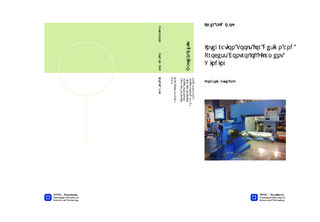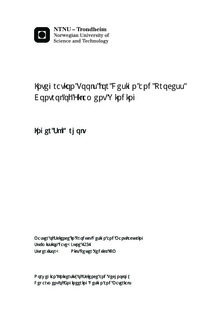| dc.description.abstract | Filament winding is a fabrication method for composite material structures, in which fibres are wound around a rotating mandrel. It is a versatile and dexterous process especially well-suited for creating and optimizing parts with a linear rotational axis. Products like pressure tanks, golf clubs or violin bows are commonly created using this technique. The winding itself is done through software solutions that generate a CNC program for the part in question. There are several such software solutions commercially available, all with different modes of operation and functionalities. However, they are also proprietary and offer little to no access into their inner logic. To optimise a part before production Finite Element Analysis software is often used. The part in question is modelled; material, forces and constraints are applied; and an analysis is run. Currently (June 2012), there are few options available for analysing filament wound products. Modelling a part with accurate filament winding layup generally has to be done manually, in a very time-consuming process. In this thesis, the author has performed a pilot study into the development of filament winding software. Software has been developed, capable of integrating both with a filament winding machine and with Finite Element Analysis software, and operating as a link between the two. The software has functionalities to extract geometrical variables from an Abaqus mandrel model; to write G codes and create a CNC program file; simulate a filament winding process in the Abaqus viewport; and, using a CNC program file, add accurate and corresponding layup to an Abaqus part. The main goal of this thesis, however, has been to create something that will serve as a basis from which others can continue development. The intention being that the software will be open source, so that anyone and everyone using it may change, improve and add on to it. | nb_NO |

